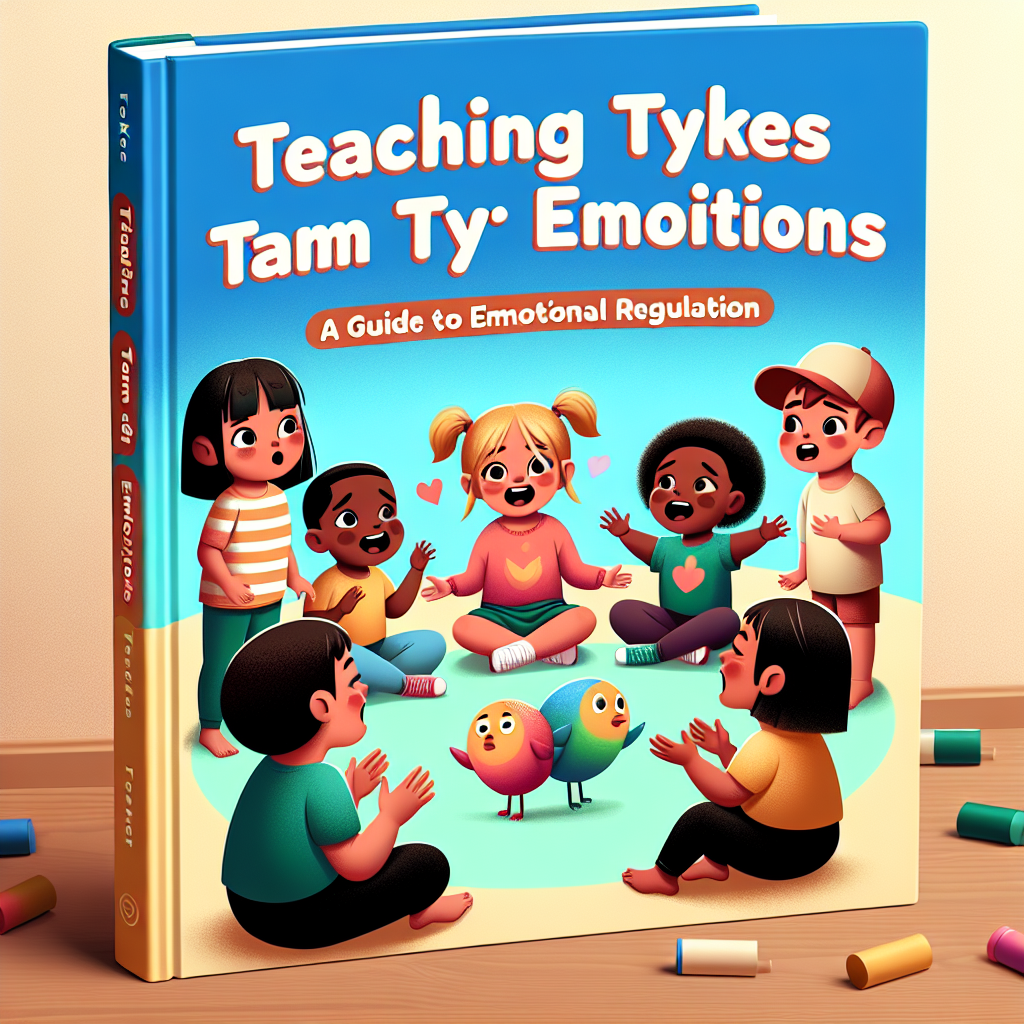
Teaching Tykes to Tame Their Emotions: An Ultimate Guide to Emotional Regulation
Introduction
Emotional regulation is a vital skill that affects every aspect of a child’s development, influencing their relationships, academic achievement, and overall well-being. Children, especially those in their earliest years—referred to here as "tykes"—often find themselves overwhelmed by intense feelings like sadness, anger, and fear. Learning how to manage these emotions is crucial, both for their immediate happiness and for their long-term resilience. In this ultimate guide, we explore effective strategies for teaching tykes to tame their emotions and cultivate a healthier emotional landscape.
Why is this topic so relevant? Presently, studies show that emotional intelligence greatly impacts children’s ability to communicate effectively, handle stress, and develop meaningful connections. Therefore, parents, educators, and caregivers must take the initiative to equip these young learners with the tools they need to navigate their feelings constructively.
Understanding Emotional Regulation
What is Emotional Regulation?
Before diving into strategies for teaching tykes to tame their emotions, it’s essential first to define emotional regulation. Emotional regulation is the ability to recognize, understand, and manage one’s emotional states. This skill involves various processes including emotional awareness, impulse control, and the ability to respond appropriately to social cues.
Why is It Important?
Here are a few compelling reasons:
- Social Skills Development: Children with strong emotional regulation are more likely to develop effective communication skills and maintain healthy relationships.
- Academic Performance: A radially calm and focused mindset enables children to concentrate better in a learning environment.
- Mental Health Resilience: Learning to manage emotions from a young age lays the groundwork for coping strategies that protect against future mental health issues.
Psychological Foundations of Emotional Regulation
The Role of Parenting Styles
Research shows that authoritative parenting—characterized by warmth, responsiveness, and structure—tends to foster better emotional regulation in children compared to authoritarian or neglectful approaches. Parents who interact positively with their children provide a rich context for emotional exploration and validation.
Attachment Theory
According to attachment theory, children who form secure attachments are more likely to develop strong emotional regulation skills. Securely attached children experience consistent responses to their emotional needs from caregivers, making them feel safe to experience and explore their emotions.
Case Study: The Williamson Family
To illustrate the concepts above, let’s look at the Williamson family. Young Timmy, aged four, had difficulty managing his anger, often throwing tantrums when he didn’t get what he wanted. His parents, Jamie and Lisa, decided to adopt an authoritative parenting style, characterized by open communication and consistent boundaries.
They implemented structured emotional check-ins during family meals, encouraging Timmy to express how he felt using faces on a chart. Over time, Timmy started articulating his emotions rather than acting them out, demonstrating the effectiveness of the family’s approach.
Analysis
This case highlights how the right parenting approach can significantly impact a child’s emotional growth. The Williamsons’ efforts enabled Timmy to recognize and express his feelings, corroborating the essential role of parental involvement in emotional regulation.
Effective Strategies for Teaching Tykes to Tame Their Emotions
1. Encourage Emotional Vocabulary
One of the first steps in teaching tykes to tame their emotions is helping them develop an emotional vocabulary. This can be done through:
- Books: Read stories that explore various emotions.
- Emotion Cards: Create cards that depict different feelings along with facial expressions.
2. Model Emotional Awareness
Children learn best through observation. By modeling appropriate emotional expression and regulation, caregivers can teach children how to handle their feelings. For instance, openly discussing your own emotions teaches kids that it’s okay to feel upset or anxious.
3. Use Play-Based Learning
Engaging children in imaginative play can be an effective tool for emotional regulation. Role-playing different scenarios allows them to experiment with feelings and responses in a safe environment.
4. Teach Deep Breathing Techniques
Practicing deep breathing is an excellent way for young children to manage physical symptoms of strong emotions. Techniques like "belly breathing" can help them relax and refocus.
| Technique | Age Group | Duration |
|---|---|---|
| Emotion Cards | 3-5 years | Daily activity |
| Role-Playing | 4-6 years | Weekly sessions |
| Deep Breathing | 3-7 years | 5 minutes daily |
Case Study: The Rodriguez School
At a preschool in Oakland, California, educators implemented a social-emotional learning program that emphasizes emotional regulation techniques. Teachers incorporate routine feelings check-ins and breathing exercises into daily activities.
After a year, teacher reports showed increased emotional literacy among students, and parents noted significant changes in home behaviors. This transformation illustrates the profound impact structured emotional education can have on young children.
Analysis
The Rodriguez School’s approach reveals how educational settings can enhance emotional regulation. By prioritizing these feelings into the curriculum, kids are given the vocabulary and tools to express themselves, which is invaluable in their overall development.
Challenges in Teaching Emotional Regulation
While the strategies above are effective, there are challenges:
- Consistency: Regular reinforcement of skills is essential for lasting change.
- Individual Differences: Each child has a unique temperament, which may affect how they process emotions.
- External Factors: Stressors from outside environments (e.g., family issues) can significantly impact a child’s emotional regulation.
To navigate these challenges, practitioners must adapt their strategies based on the individual needs of each child.
Conclusion
Teaching tykes to tame their emotions isn’t just about managing upset feelings; it’s about empowering them to develop lifelong skills that will stand them in good stead. By providing them with the tools of emotional awareness, validation, and constructive expression, we lay the groundwork for a future generation capable of navigating life’s challenges with resilience and grace.
In addition, parents and educators should stay motivated and open to learning. Emotions are complex, but with dedication, the process of teaching emotional regulation can be both rewarding and enjoyable.
FAQs
1. What age should I start teaching my child emotional regulation?
It’s beneficial to start as early as 2-3 years old. Young children can begin to understand and express basic emotions.
2. How can I tell if my child is struggling with emotional regulation?
Signs include frequent tantrums, difficulty calming down after being upset, and trouble expressing feelings verbally.
3. Are there any specific books you recommend for teaching emotions?
Books like "The Very Hungry Caterpillar" by Eric Carle and "Today I Feel Silly" by Jamie Lee Curtis are excellent options.
4. What can I do when my child has a meltdown?
Stay calm, validate their feelings, and guide them through deep breathing or other calming techniques.
5. How can I discuss my own emotions with my child?
Use simple language and real-life scenarios, emphasizing that everyone experiences a range of emotions—this normalizes the conversation surrounding feelings.
In summary, teaching tykes to tame their emotions is an essential investment in their future happiness and success. By integrating emotional education into daily activities and interactions, we become instrumental in shaping a future generation that approaches life with confidence and emotional intelligence.

















